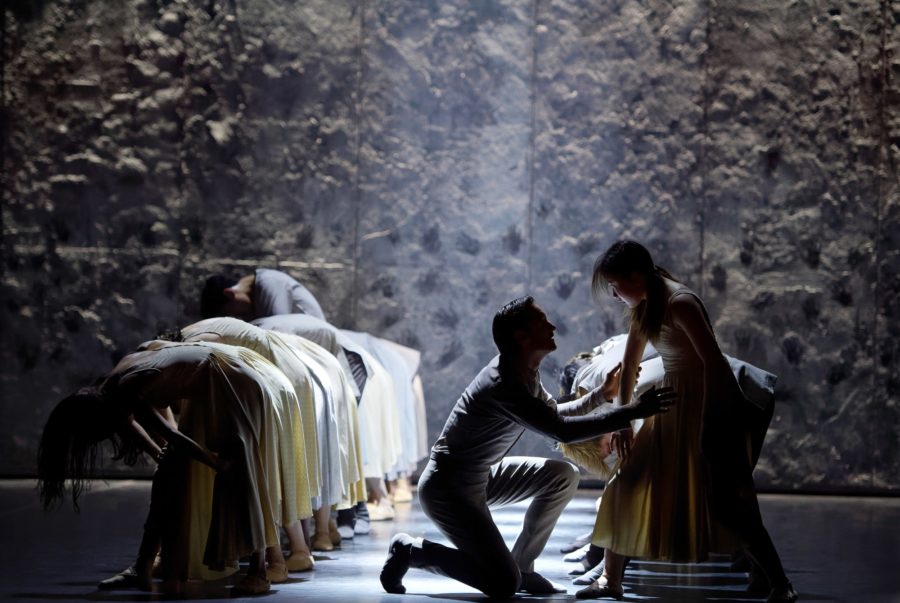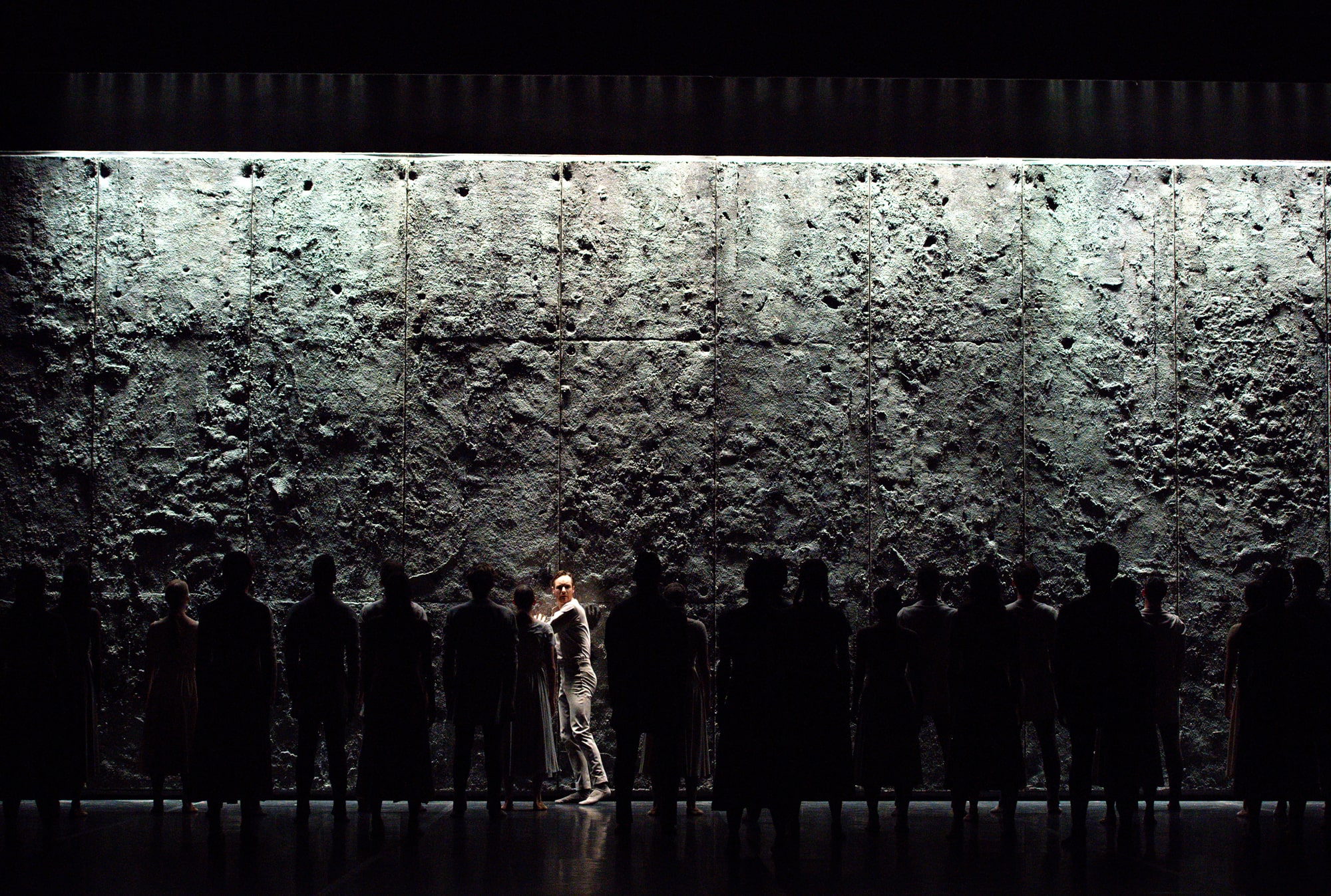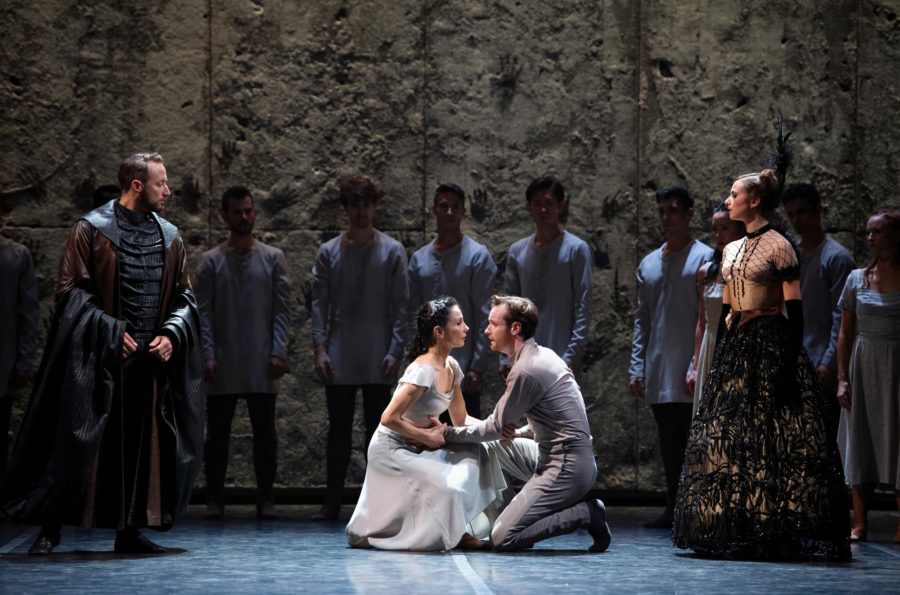Akram Khan’s version of the classic ballet transports Giselle from her village to a migrant garment factory. Khan’s re-imagination of Giselle with English National Ballet fuses ballet, contemporary dance and reoccurring moments of South Asian dance in the form of mudra hands. Tamara Rojo is a strong and resolute Giselle, contrary to the timid and shy girl presented in the classical ballet.
The space opens in darkness, gradually illuminating set designer Tim Yip’s monolithic wall, which tilts and moves. Heads down and palms spread wide against the wall, the dancers push against it, leaving behind dusty handprints as they step away. The dancers are dressed in shades of grey, the men in tunic-style t-shirts and the women in gauzy skirts.

Act I sees Albrecht (James Streeter) and Hilarion (Jeffrey Cirio) vying for Giselle’s attention. The young men stumble through the factory as they confront one another and chase after Giselle. The drama culminates when the factory landlords, dressed in ostentatious Hunger Games-esque costumes, demand Albrecht return with them to their world. Abandoning the factory, Albrecht leaves Giselle to die of a broken heart.

But it’s Act II that is truly captivating. Khan’s Wilis (the ghosts of wronged female factory workers) are both beautiful and ghoulish. Stina Quagebeur is an excellent Myrtha, Queen of the Wilis. She towers over Albrecht and Hilarion, with an all powerful and ethereal other-worldliness. Khan equips the Wilis with long, thin sticks reminiscent of sewing needles, which they strike against the floor and pummel into the bodies of the young men.
Rojo and Streeter’s final pas de deux is devastatingly beautiful. Caught somewhere between life and death, Rojo slips through Streeter’s arms. He seems to step right through Rojo as he reaches out to hold her. A series of tender and gravity-defying lifts ends as Rojo’s body turns limp and floppy.

The only missing link is the resoluteness of Khan’s storyline. Without the guidance of programme notes, Tim Yip’s set could just as easily be a refugee camp or the borderlines along Trump’s wall, or an industrial wasteland. Is Albrecht another migrant worker? How does Giselle die? Who is Hilarion, and why should we care about him?
Despite the gaps in the storytelling, the atmosphere that Khan creates, with the help of Vincenzo Lamagna’s haunting score and Mark Henderson’s atmospheric lighting design, is enough to satisfy. Giselle serves up heaps of intensity and depth that more than makes up for the holes in Khan’s narrative.
Reviewed on 18th of September at Sadler’s Wells


